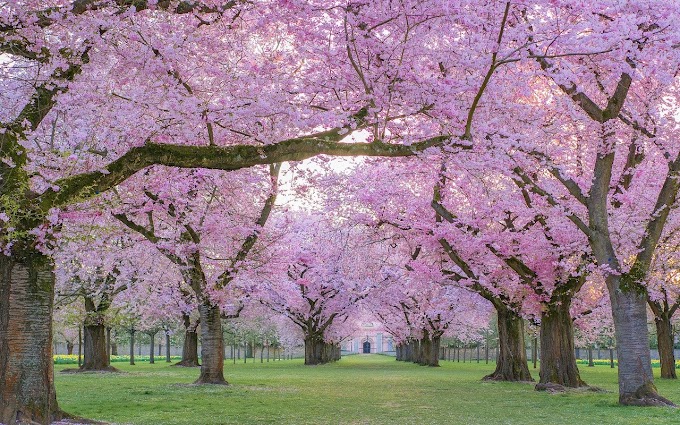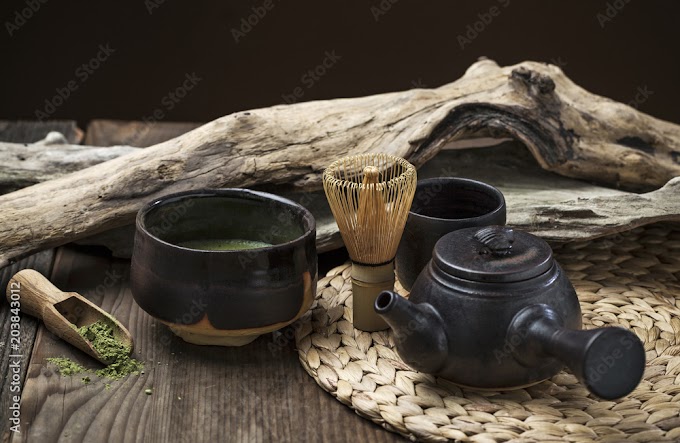Shinjuku Gyo-en | 新宿御苑
Shinjuku Gyo-en is a large national park and garden in Shinjuku and Shibuya, Tokyo, Japan. It was originally a residence of the Naitō family in the Edo period. It is now a favorite hanami (cherry-blossom viewing) spot, and large crowds can be present during cherry blossom season.

The garden, which is 58.3 hectares in area with a circumference of 3.5 km, blends three distinct styles: a French Formal and English Landscape in the north and to the south a Japanese traditional. A traditional Japanese tea house can be found within the gardens.

The garden has more than 20,000 trees, including approximately 1,500 cherry trees which bloom from late March to early April. Other trees found here include the majestic Himalayan cedars, which soar above the rest of the trees in the park, tulip trees, cypresses, and plane trees, which were first planted in Japan in the Imperial Gardens.

Kiyosumi Garden | 清澄庭園
Kiyosumi Garden is a traditional Japanese stroll garden located in Fukagawa, Tokyo. It was constructed along classic principles in 1878-85, during the Meiji Period, by Iwasaki Yatarō. By subtle hints in path construction and placement the visitor is led on a walk around the lake. Water-worn boulders were brought in from all over Japan, to give the garden its character; hills and dry waterfalls were constructed with them and two sequences of them form stepping-stones (isowatari) across small inlets of the lake, which almost completely fills the garden, allowing a pathway of many picturesque episodes around its perimeter.

The pond has three islands, one of which is connected with a bridge. There are iso-watari — this term refers to the stepping stone pathways that lead across shallow parts of the pond. When crossing the pond using iso-watari, one can view the fish in the pond. It teems with carp, turtles, and waterfowls. Its location near the river and the bay attracts a large number of birds.

There are over 4000 trees in this constricted space. Japanese Black pine (Pinus thunbergii) are the dominant trees. Purple azaleas, Hydrangea macrophylla, Iris ensata and Taiwan cherry (Prunus campanulata) provide seasonal color. The Iwasaki family collected fine and beautiful stones from all over Japan, brought to Tokyo on their steamships and placed around the garden. Including the flagstones and iso-watari stones, the total number of stones used is immense and the garden can indeed be perceived as a stone garden.

Rikugi-en Gardens | 六義園
Rikugi-en Gardens are a Tokyo metropolitan park in Bunkyō-ku. The name Rikugi-en means Garden of the Six Principles, referring to the six elements in waka poetry, based on the traditional division of Chinese poetry into six categories. The gardens consist of a small pond, trees, and a hill.

The construction of the gardens took place between 1695 and 1702, and was headed by Yanagisawa Yoshiyasu by permission of the fifth Tokugawa shōgun Tokugawa Tsunayoshi. It is a typical example of a daimyo garden from the Edo period. The gardens today are about one-third of their original size. In 1938, they were donated to the Tokyo City government. They were specified as a special place of scenic beauty (特別名勝, tokubetsu meishō) by the Japanese government in 1953.

The gardens are open from 9 a.m. to 5 p.m. General admission (junior high school and above) is 300 yen. People over 65 pay 150 yen, and students under junior high school age (and junior high school students living or studying in the Tokyo metropolitan area) may enter for free.

Koishikawa-Kōrakuen | 小石川後楽園
Koishikawa-Kōrakuen is Japanese garden located near the Tokyo Dome in the Koishikawa district of Bunkyō Ward , Tokyo . It has a central lake and several small hills, making it a popular place for walking, and typical of the promenade gardens ( kaiyushiki teien ) of the Edo period . It is the oldest garden in Tokyo.

The garden was begun by Mito Yorifusa in 1629, and completed by his son Mito Mitsukuni. It was created with advice from the Chinese scholar Zhu Zhiyu, and incorporates elements of both Chinese and Japanese taste.

The garden consists of 67 scenic objects and scy including ponds, stones, trees and bridges. From late November to early December, amazing landscape of traditional Japanese garden and red maple trees can be seen.

Tokyo Imperial Palace East Gardens |皇居東御苑
The Imperial Palace East Gardens are a part of the inner palace and the only area that’s open to the public. They are the former site of Edo Castle’s innermost circles of defense, the honmaru “main circle” and ninomaru “secondary circle”, and now a beautiful Japanese style garden has been created.








0 Comments